We're on our way to Dos Playa, the main breeding ground for the four turtle species found on the island. In our silver rental car, we drive along a bumpy gravel road. Arikok National Park is one of the largest nature reserves in the Caribbean, covering about twenty percent of Aruba. With its gigantic rock formations, hidden bays, special caves, historic rock paintings, and great diversity of birds, mammals, and reptiles, nature lovers will have plenty to explore here.
One of the park's main attractions is Conchi, a naturally formed pool where you can swim and snorkel. However, the park has much more to offer. Blogger Kayleigh shares her three favorite spots in Arikok National Park.
1. Dos Playa
I'm heading towards the end of the world. At least, that's how it feels as I brave the rugged, sandy road. Deserted and alone, we drive through a landscape that feels more like a moonscape. Sandy plains alternate with limestone hills. After a few bends, we see the azure blue ocean in the distance. I park my car in the middle of the road to enjoy the view.
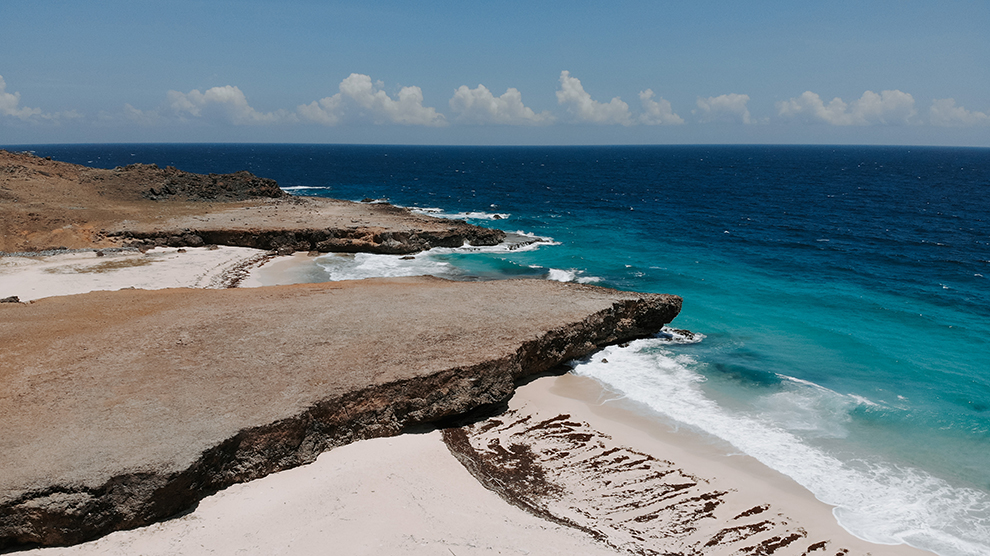
Arriving at the cliff, we walk down a stone staircase towards the golden beach. The waves crash fiercely against the two cliffs between which the beach lies. I wiggle my bare feet in the sand, and the wind blows briskly through my hair. Every time I think the water can't get any bluer on this island, I find another spot where I'm proven wrong. I flop down in the sand, soak in the sound of the sea, and enjoy the endless view over the Caribbean Sea.
2. Quadirikiri Cave
Witness stalactites, stalagmites, and hundreds of bats in one of the two caves that the national park harbors. The Quadirikiri Cave is especially worth a visit. The name of this cave originates from the Indigenous People of the Americas. With its two chambers, both illuminated by sunlight streaming in through various holes in the cave's roof, a magical light show is created within the dark cave. Get your camera ready, because you'll want to snap a vacation picture here. Tip: ask the ranger at the entrance if he can give you a tour. They'll show you the cave's most standout spots.
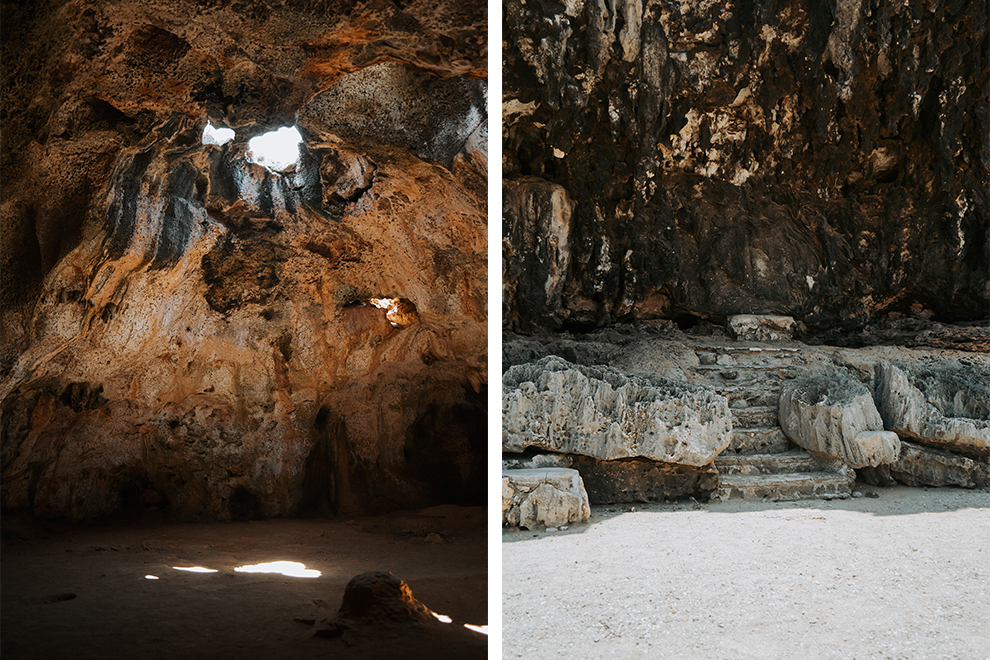
3. Cunucu Arikok
Together with ranger Rambo, we hike the Cunucu Trail. This two-hour walking route is one of the best ways to explore the national park. During this hike, we learn all about the different plant species, including cacti and aloe vera. We also admire the ancient rock paintings from the era of the Caiquetio Indians of the Arawak tribe from Venezuela. This tribe engaged in fishing, hunting, and gathering from 2500 BC to 1000 AD. The rock paintings have been well-preserved on the island. A lesser-known attraction is the snow-white Adobe house made of natural materials such as mud and clay. This farmhouse, also known as Cunucu, is one of the park's hidden gems.
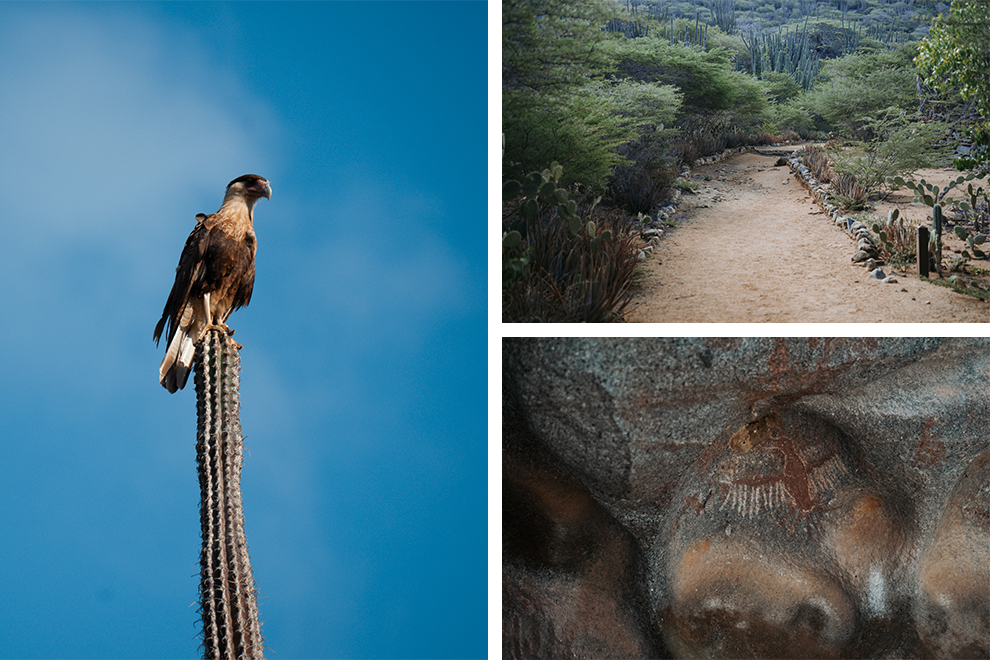
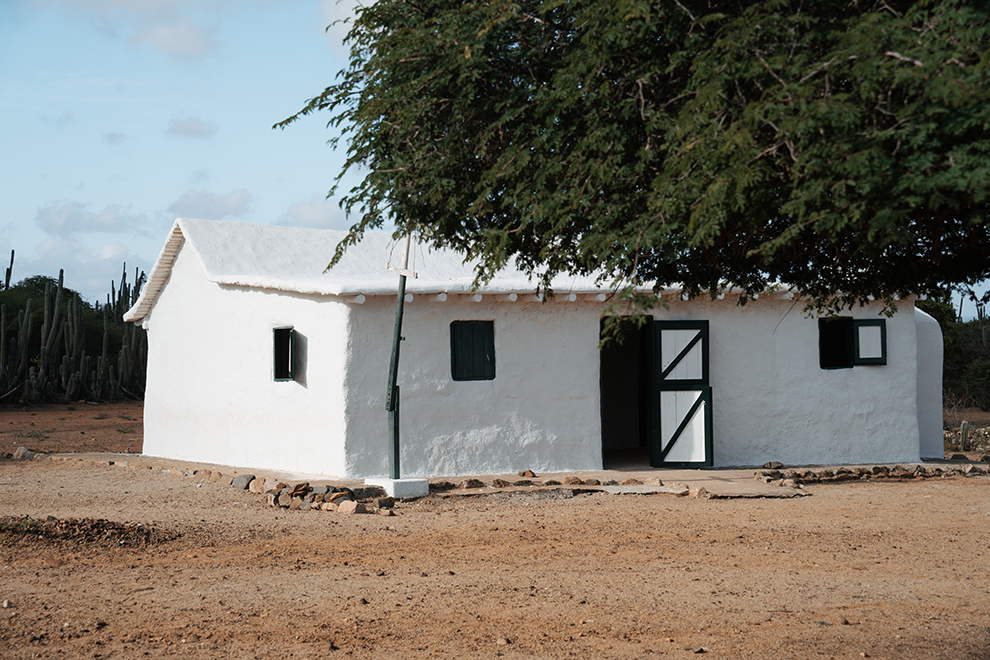
Practical Information
- The entrance fee for adults is 11 US Dollars per person.
- The park is open 7 days a week (closed on January 1st).
- The San Fuego entrance is open from 08:00 to 16:00.
- The Vader Piet entrance is open from 08:30 to 15:00.
- The Visitor Center is open from 08:00 to 15:30.
- Remember to bring plenty of water and sunscreen if you're going hiking.
- Looking for a rental car? We rented a Kia Picanto from Amigo Car Rental.
Accommodation on Aruba
If you prefer peace, small-scale accommodations, and personal attention, we can recommend one of the 17 apartments at Paradera Park. Prefer a resort within walking distance of the famous Palm Beach? Consider the comfortable rooms at Courtyard by Marriott.
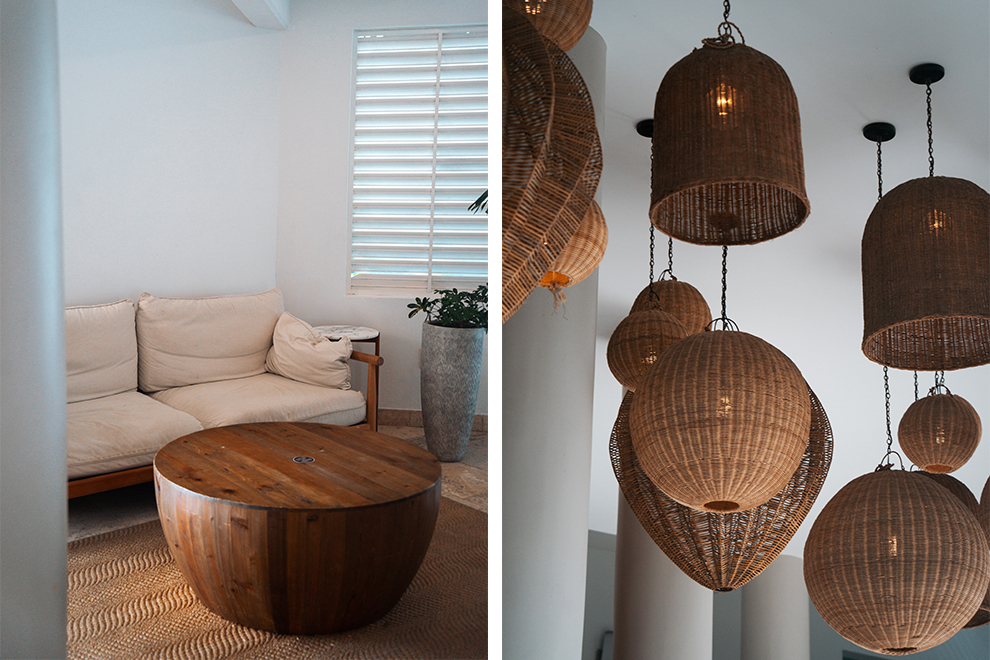 Accomodations: Courtyard by Mariott
Accomodations: Courtyard by Mariott
Also read: "5 of the best outdoor activities in Aruba"
This article was written in collaboration with the Aruba Tourism Authority. Want to know more about Arikok National Park or other cool attractions in Aruba? Visit the Aruba Tourism website >
Create your own blog
Easily add stories to your diary in our online editor or app
Add your images and choose your pages layouts
Share your journey in real time without the fuss!